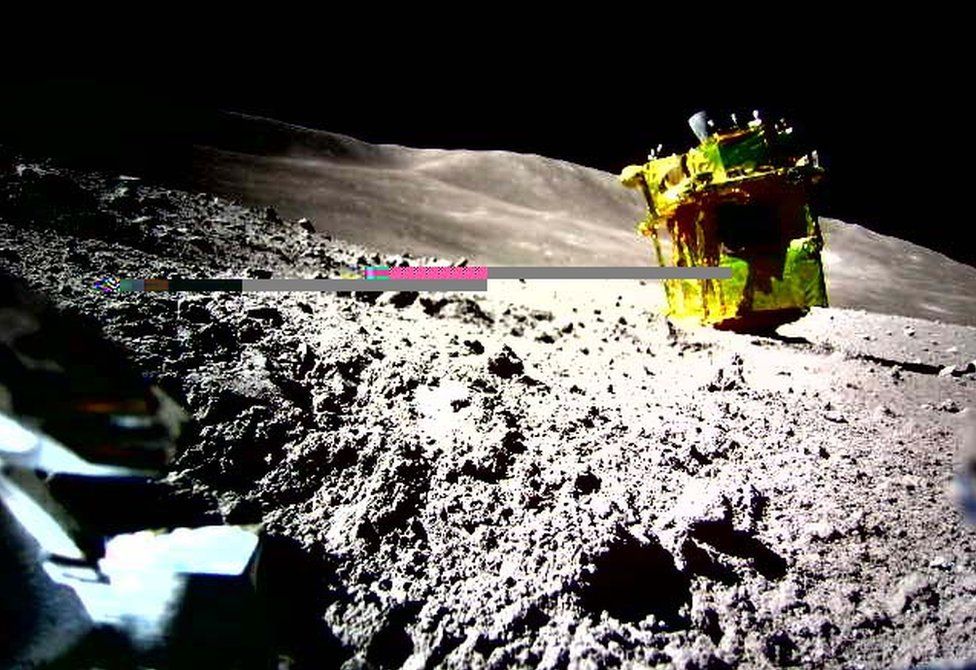-

-
-
Loading

Loading

Japan's Moon lander, Slim, encountered difficulties during its historic touchdown on the lunar surface. The first image of the spacecraft shows it rotated 90 degrees from its intended position. This explains the challenges it faced in generating enough electricity to operate. The picture was taken by Sora-Q, a small robot that was released from Slim just before landing. The Japanese space agency, Jaxa, stated that an abnormality in the main engine caused the spacecraft's landing orientation to be affected. One of the thrusters on Slim stopped working during descent. To transmit the image to Earth, Sora-Q had to send it to another ejected robot called Lev-1. Unfortunately, Slim was unable to get its solar cells to work and had to be shut down. Jaxa officials hope to awaken Slim when lighting conditions change at its landing site. Before being shut down, Slim's infrared camera captured images of the lunar surface, revealing its slope and surrounding rocks. Jaxa became the fifth national space agency to achieve a soft lunar touchdown, joining the US, the former Soviet Union, China, and India. Only around half of all attempts to softly land on the Moon have been successful. Jaxa used advanced precision-navigation technologies to ensure a safe landing for Slim. The onboard computer used rapid image processing and crater mapping to avoid obstacles and successfully reach its targeted location. The data collected before shutting down confirmed that Slim had landed approximately 55 meters east of the original target site. The successful movements of the two rovers, Sora-Q and Lev-1, on the lunar surface have been celebrated, considering the autonomous operations and inter-robot communication displayed. This achievement is seen as a significant advancement in technology for future lunar explorations. The knowledge gained will be applied in upcoming missions, according to Jaxa.